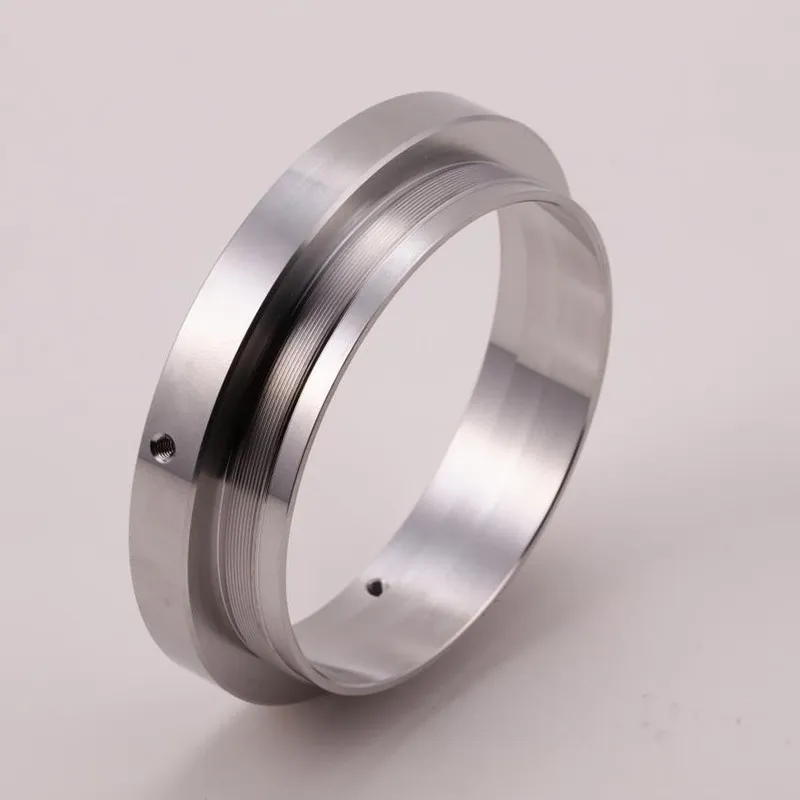What Role Do Rotary Body Parts Play in Modern Machinery?
2024-11-28
In the world of machinery and manufacturing, efficiency, durability, and precision are essential to keeping operations running smoothly. One of the often-overlooked components that contribute to these factors are rotary body parts. These components, which enable the rotation of mechanical systems, play a critical role in the functionality of a wide range of machines. But what exactly are rotary body parts, and why are they so vital in modern machinery? In this blog, we’ll explore the significance of rotary body parts and how they impact performance in various industries.
1. What Are Rotary Body Parts?
Rotary body parts are components that facilitate rotational movement within a mechanical system. These parts are essential in converting or transmitting rotary motion, enabling machines to perform specific tasks, such as driving, turning, or spinning. Some common examples of rotary body parts include gears, shafts, pulleys, rotors, and bearings.
These parts can be found in a wide variety of machines, from automotive engines and industrial equipment to robotic systems and consumer electronics. Each rotary body part is designed to handle specific types of stress, pressure, and rotational speed, making them integral to the overall efficiency of the machinery they serve.
2. The Importance of Rotary Body Parts in Machinery
Rotary body parts serve several crucial functions in machinery. First and foremost, they enable the transfer of power and motion within the system. For instance, in automotive engines, rotary body parts such as the crankshaft convert the linear motion of pistons into rotational motion, which ultimately drives the vehicle.
In industrial machines, components like gears and motors rely on rotary body parts to transfer mechanical energy from one part of the system to another. The movement generated by these parts allows for a range of operations, from cutting and shaping to assembly and packaging.
Without these components, many machines would be unable to function efficiently, as the required rotational motion would be impossible to achieve.
3. Increased Efficiency Through Precision
One of the key benefits of rotary body parts is their ability to operate with high precision. In many machines, such as CNC (Computer Numerical Control) machines or automated assembly lines, precise rotary motion is critical for achieving the desired outcome.
For example, in robotic arms, rotary body parts like motors and actuators provide the fine control needed to pick up, move, and position objects with incredible accuracy. This precision is also important in industries like aerospace, where small deviations in rotational movement can lead to catastrophic failures.
Advanced manufacturing techniques, including CNC machining and 3D printing, have made it possible to create rotary body parts that meet exact specifications, ensuring that machinery operates with optimal precision and minimal wear and tear.
4. Durability and Longevity
Rotary body parts must withstand a great deal of mechanical stress over their lifespan. As these parts are subjected to continuous rotation and friction, they must be built from durable materials that can handle high loads and high speeds without compromising performance. Steel, aluminum, and titanium are commonly used for these components due to their strength, resistance to corrosion, and ability to withstand intense pressure.
Additionally, materials like ceramics and composite materials are also being used in specialized rotary body parts to offer even greater durability and reduce the weight of components. This is especially important in industries such as aerospace or automotive manufacturing, where durability, weight reduction, and performance are crucial.
Regular maintenance of rotary body parts can also prolong their lifespan, helping to ensure that machinery remains in working condition for years and reduces the risk of costly repairs or replacements.
5. Energy Efficiency and Sustainability
As industries look for ways to reduce energy consumption and lower their environmental impact, rotary body parts have become an important part of the solution. High-performance parts, such as low-friction bearings, help to reduce energy losses that occur due to friction during the rotation of components. This translates into improved energy efficiency and reduced power consumption.
Moreover, advancements in materials science have made it possible to create rotary body parts that are not only energy-efficient but also recyclable. Many modern rotary body parts are designed with sustainability in mind, reducing the environmental footprint of manufacturing processes.
6. Application in Various Industries
Rotary body parts are used across many different industries, demonstrating their importance in various manufacturing sectors:
- Automotive Industry: Rotary body parts like crankshafts, camshafts, and timing belts are essential for engine performance, while components such as steering systems, transmissions, and braking systems rely on rotating parts to function effectively.
- Aerospace: In aircraft engines, rotary body parts such as turbines and rotors are essential for generating thrust and controlling flight operations.
- Industrial Machinery: Rotary body parts such as conveyor belts, motors, and pumps are critical in the movement of materials and the operation of machines in factories and warehouses.
- Robotics: Precision rotary parts are used in robotic arms, gears, and actuators to provide fine control for automated tasks.
- Consumer Electronics: Devices like electric fans, hard drives, and washing machines rely on rotary body parts to perform essential functions.
7. Innovation and Future Trends
As industries continue to evolve, the demand for more efficient, durable, and versatile rotary body parts will only grow. The integration of smart technology, including sensors and AI-driven monitoring systems, is enabling manufacturers to create more intelligent rotary components that can self-monitor for wear and tear, ensuring continuous performance.
Moreover, 3D printing and additive manufacturing are opening up new possibilities for producing rotary body parts with complex geometries, offering even greater efficiency and customization for specialized applications.
Conclusion
Rotary body parts are fundamental to the operation of modern machinery, providing the precision, durability, and functionality needed for various industries to thrive. From automotive engines and industrial equipment to robotics and consumer electronics, these components play a pivotal role in enabling machines to perform essential tasks.
As technology continues to advance, rotary body parts will likely become even more efficient, durable, and versatile, driving innovation in manufacturing processes and supporting sustainability efforts across industries. For manufacturers looking to stay competitive in an ever-changing market, investing in high-quality rotary body parts is a key factor in ensuring the success and longevity of their operations.



